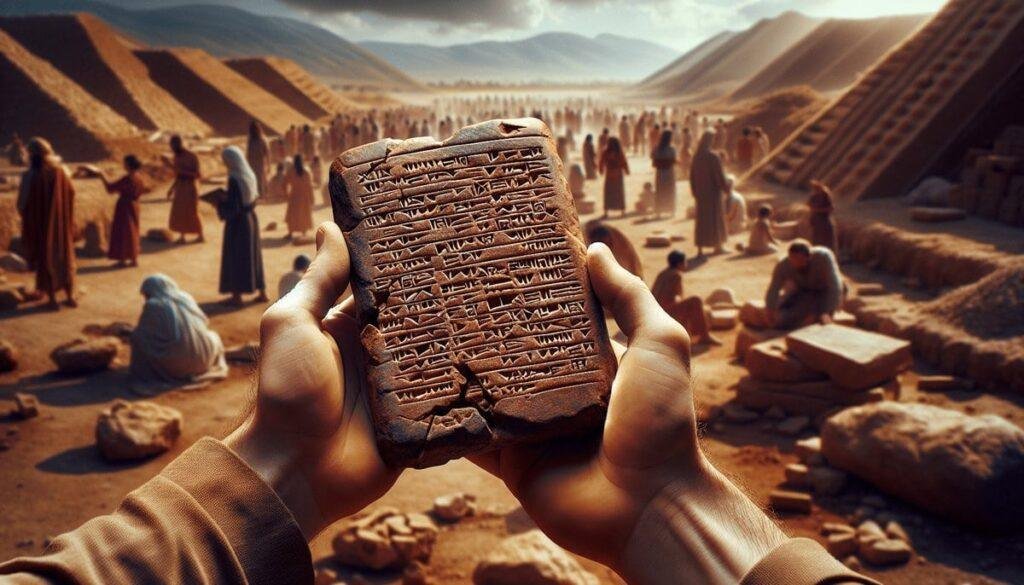Have you ever wondered how ancient markets contributed to the economic mechanisms of temples? The exploration of ancient markets and their role in the temple economy offers a fascinating glimpse into both historical and biblical contexts. Understanding this interplay provides invaluable insights not only into the economic strategies of ancient societies but also into their social and cultural fabric. This article aims to explore how markets were integral to sustaining temple economies, focusing on biblical references, archaeological evidence, and their broader significance.
Discovery Context
The marketplace, a bustling center of trade, commerce, and interaction, was pivotal in ancient societies. This was especially true in biblical times when the market served as both an economic engine and a social hub. Biblically, the temple often possessed considerable influence over economic activities, which is frequently depicted in scriptures. For instance, the exchange of goods within temple precincts and the collection of tithes were common themes.
Biblical References
The Bible offers multiple references to market activities intertwined with temple practices. For instance, in the Gospel of Matthew, Jesus overturns the tables of the money changers at the temple, indicating the prevalent market dynamics within the temple precincts. This suggests a nuanced relationship between religious and economic activities, where trade and commerce intersected with spiritual practices.
Historical Background
Historically, many ancient temples were also economic centers. They were often involved in large-scale economic activities, managing lands, livestock, labor, and sometimes even engaging in trade. This economic role was crucial, as temples often supported not only spiritual leaders but also artisans, workers, and the wider community through their market activities.
Geographic Location
Geographically, these market-temple interactions were not restricted to a single region. They spanned various cultures and continents, from the Middle East’s Mesopotamian temples to Egypt’s expansive temple complexes. Each location provides a unique window into how ancient societies structured their economies around religious institutions. Recent archaeological discoveries in places like Jerusalem and the broader Levant region have shed light on these interconnections, revealing temple-based economies’ complexity and sophistication.
Archaeological Evidence
For a historical narrative to hold weight, archaeological evidence is indispensable. It not only validates textual references but also provides tangible proof of past economic activities and structures.
Specific Artifacts
Artifacts such as clay tablets with inscribed transactions, temple ledgers, and coins offer a glimpse into past economic systems. Excavations around temple sites have often uncovered market-related materials, including weights, measures, and remnants of marketplaces. For instance, the discovery of ancient bazaars close to temple sites underscores the close ties between sacred spaces and economic activities.
Dating Methods
Dating these artifacts accurately helps contextualize their significance. Techniques like radiocarbon dating and stratigraphy are common methods used by archaeologists to ascertain the age of these finds. By placing artifacts within a chronological framework, historians can better understand the evolution of temple economies and their relationship with markets over time.
Physical Descriptions
A detailed examination of these artifacts often reveals the sophistication of ancient market activities. For example, the crafting quality of coins and the detail in inscribed clay tablets suggest well-developed economic systems. Furthermore, the layout and construction of marketplaces near temples indicate careful planning and significant investment in these economic hubs.
Expert Interpretations
Experts in biblical archaeology and ancient economies provide crucial insights into these findings. Scholars often interpret the interplay of market and temple activities as a reflection of the broader economic policies and religious practices. According to Dr. Jonathan Harmon, a noted biblical archaeologist, the integration of markets into temple complexes may have been a means to consolidate religious and economic power, thereby enhancing the temple’s influence across the community.
Significance
Understanding the significance of ancient markets in temple economies extends beyond mere historical interest. It bridges the gap between past and present economic practices and offers insights into how religious institutions managed considerable economic power.
Biblical Implications
The biblical implications of ancient market practices are profound. They reveal how religious institutions could wield significant economic influence, often acting as community centers that provided both spiritual and material sustenance. This understanding helps interpret various biblical narratives where economic and religious activities are intertwined.
Historical Impact
Historically, temple economies could dictate the prosperity of a region, influencing everything from agriculture to trade routes. This impact is evident in archaeological records indicating that temples often served as banks, lenders, and places of trade, significantly affecting local economies.
Modern Understanding
By studying these ancient systems, modern economists and historians can gain valuable insights into the evolution of economic practices. Understanding the temple economy’s mechanisms offers a template to analyze how religious and economic institutions can co-exist and influence each other.
Research Status
The research into the role of markets in temple economies is ongoing, with new discoveries continually adding depth to current knowledge. Interdisciplinary studies, combining archaeology, history, and theology, are enhancing our understanding of these complex systems. Continuous developments in archaeological methods and technology promise to yield further insights in the coming years.
Conclusion
In summary, the exploration of ancient markets and their role in temple economies underscores a complex and dynamic interplay between religious and economic spheres. Recent archaeological findings enrich this narrative, offering substantive evidence of past economic practices. As research progresses, these insights provide a deeper understanding of ancient societies’ economic structures, revealing the intricate balance of power, spirituality, and economics. Such a comprehensive understanding encourages further scholarly exploration, inviting a re-examination of both ancient texts and material culture. The ongoing investigation into these fascinating intersections continues to reshape our historical narrative, offering valuable lessons for the present and future. Pursuing these inquiries not only bridges the gap between past and present but also enriches our collective cultural heritage.





